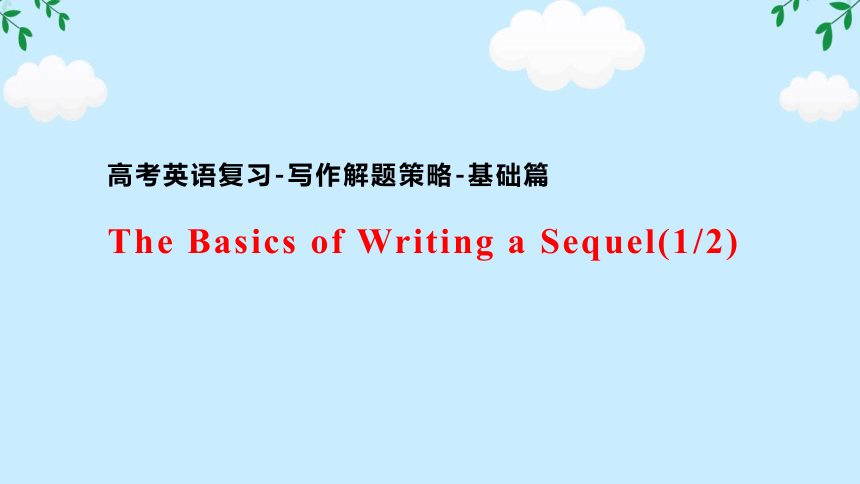(
课件网) 高考英语复习-写作解题策略-基础篇 The Basics of Writing a Sequel(1/2) 1st the shad with many bones 一恨鲥鱼多刺 3rd the Dream of Red Mansions with no 三恨红楼 2nd the crabapple without fragrance 二恨海棠无香 Eileen Zhang:3 Lifetime Regrets 张爱玲-人生三恨 ENDING 未完 Think and take notes At the end of this lesson, you are supposed to find the answers to the following questions: 1. What is a short story made up of 2. What makes a good sequel 3. How can I write a good sequel 4. What are the ultimate weapons Structure Standard Skills Special reminder Summary Think and try answering Our sequel writing example task for this lesson Pause, read and think 1. What is a short story made up of Setting Characters Plot Conflict Conclusion Point of View Language Tone Theme Beginning 起 Developing 承 Turning 转 Ending 合 Emotion 情 Description 语 story line story tools story’s inner controlling line What? Content Why? Logic Listen, think and take notes How? Method Narration 人 Setting Setting is the “ when and where ” of a story. It is the time and place during\in which the story takes place. Details that describe: Time of day/year Weather Scenery Transportation Furniture Colours & sounds Clothing Dialects Listen, think and take notes at midnight stormy a visual disaster by rocket a fancy couch dark purple in white bathrobe mysterious languages e.g: When Della had finished crying she went to the shabby window and looked out sadly at a grey cat walking along a grey fence in a grey backyard. --from Gift of the Magi by O’Henry The Functions of a Setting To create a mood or atmosphere To be the source of conflict(s) To make action(s) seem more real To symbolize an idea Do we need to elaborate on(详写)the setting in a sequel Yes, but only a little. The minor setting CAN develop a bit! Abrupt change NO! Listen, think and take notes Characters:The persons, animals etc The protagonist(主角): the main character of the story the one with whom the reader identifies. not necessarily “good”. Listen, think and take notes The antagonist(反派): the force in opposition of the protagonist; may not be “bad” or “evil”, but opposes the protagonist in a significant way. Plot the organized pattern or sequence of events that make up a story. Listen, think and take notes the literary element that describes the structure of a story. It shows arrangement of events and actions within a story. Plot Diagram 2 3 4 5 1 1.Exposition - introduction; characters, setting and conflict (problem) are introduced 2.Rising Action- events that occur as result of central conflict 3.Climax- highest point of interest or suspense of a story 4.Falling Action - Action that follows the climax and ultimately leads to the resolution. A natural transition. 5.Resolution- loose ends are tied up; the conflict is solved Exposition Rising Action Climax Falling Action 5.Resolution Exposition 2 3 4 5 1 This usually occurs at the beginning ... ...

